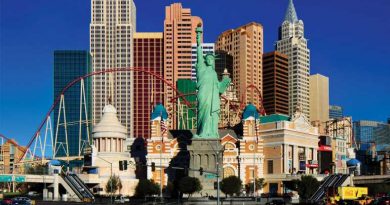Hotel recovery chugs along, but inflation and labor are ongoing concerns
LOS ANGELES — As the hotel industry gathers for the Americas Lodging Investment Summit this week, it serves as a chance to dive into projections and analysis for the year to come, and a consensus has emerged on both the recovery and the stumbling blocks ahead.
Leisure demand continues to drive the return to travel, while progress is underway with business and group bookings, but the largest events and companies have been some of the slowest to return.
Meanwhile, as rate and revenue growth remain promising, there is widespread concern over inflation, a persistent labor shortage and the next Covid-19 variant or development.
“It’s been a strong recovery, but there are still some bumps in the road,” said STR senior vice president Carter Wilson. “December was the strongest month the industry has had during the entire pandemic. And the week between Christmas and New Year’s recorded the highest ADR (average daily rate) of any week ever. So, the leisure demand is not that deterred by omicron.”
Room rates are steady
One positive point throughout the pandemic for hotels has been the stability of room rates, which in many destinations have risen. The average daily rate across the industry in 2021 was $125, according to STR, and is expected to climb to $134 in 2022. Revenue per available room is also expected to rise from $72 in 2021 to $86.
“It’s the first time in a downturn that we’ve been able to hold rate, and now we’re in a position to drive rate,” said Warren Fields, CEO of Benchmark Pyramid.
However, Wilson said the industry should be prepared for some positive signs of recovery to trigger what may look like negative momentum on key hotel data points such as ADR.
“I think we’ll see a softening in rate as groups come back,” Wilson said.
Inflation and the labor shortage
That is not the only place where rebalancing may first appear negative. Cindy Estis Green, CEO of Kalibri Labs, reminded the ALIS audience that for the last two years the U.S. traveler has had few options outside the country, so some domestic demand may shift toward international destinations, but in turn the U.S. is anticipating its own growth in foreign tourism this year.
Overall, business travel remains 20% below previous levels, and while leisure travel has driven returns to 2019 RevPAR levels, only 58% of meetings and events are expected to return by the close of 2022, which heavily impacts hotel revenue on rental fees and food and beverage sales.
While the dollar figures are returning to pre-pandemic levels, all of the analysts said inflation will play a large role in determining when a full rebound has occurred, which is still two to three years away according to an STR and Tourism Economics analysis.
“Inflation will make 2022 look very different from 2019,” Larry Cuculic, president and CEO of Best Western Hotels said. “That puts pressure on labor, puts pressure on supply, and the cost of doing business. So, while topline might look similar or slightly better, from our perspective what we’re concerned about is bottom line for our hoteliers.”
Cuculic and other hotel executives also said labor continues to be among the top issues confronting the industry, as U.S hotels are projected to end 2022 with 166,000 fewer workers than they had in 2019, a 7% decline.
“There’s not one solution,” said Sloan Dean, CEO and president of Remington Hotels. “And I think it’s going to be a problem for not only this year but for many years.”
Fortune 500 business travel is slow to return
Green said the outlook can be highly different depending on the market. The Top 50 U.S. markets continue to be dragged down by the lack of corporate and international travel. Small and midsize markets, on the other hand, have seen a bigger rebound in business travel.
“It’s a world of have and have nots, and that will persist for a couple more years,” she said. “The nature of that commercial business is local and regional and drive-to, and it’s back, is doing well and is going to continue. It’s really on the upper tier, which is big numbers and brings the average down, that’s the Fortune 500 companies, where CFOs are restricting purse strings for travel, because they did it on Zoom for a couple years and can keep doing that.”
Michael Grove, chief operating officer at HotStats, said in the Middle East and Europe revenue from room service went up during the pandemic, but fell in the United States. He anticipated U.S. hotel companies may reverse course and start revamping their room service programs rather than reducing them in order to recoup more food and beverage revenue.
“I don’t think we ever go back to the previous business mix,” Grove said. “I don’t think going back to 2019 is realistic.”
Green agreed that some business travel will never return and said hotels should be leaning into new traveler behaviors to capture more guests, such as the growing tendency for longer stays that is in part tied to the blending of business and leisure trips.
“I think it will make up for the portion of commercial business that will never come back, and then some,” Green said.
Source: Read Full Article



